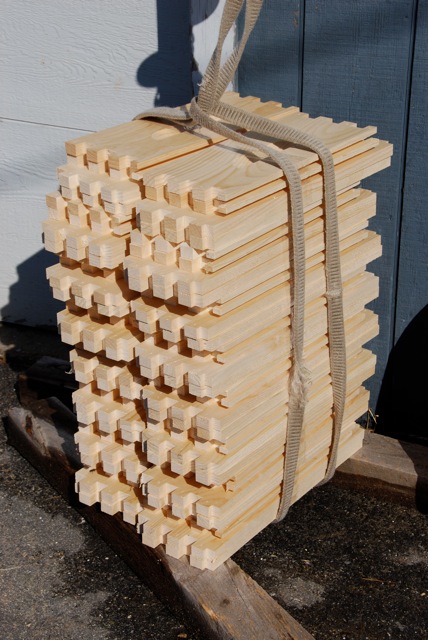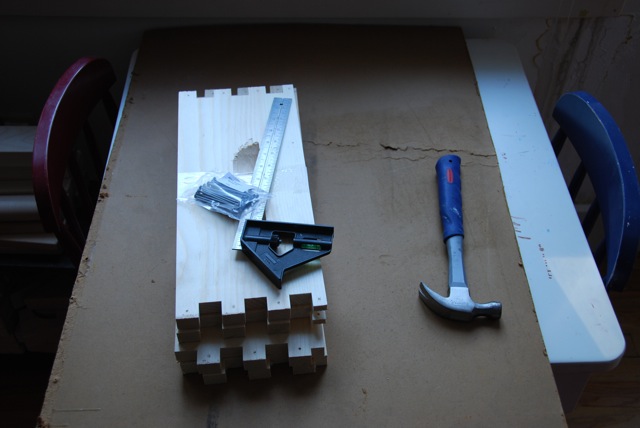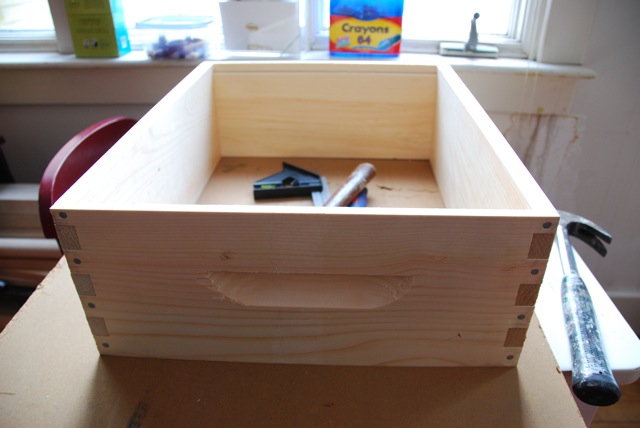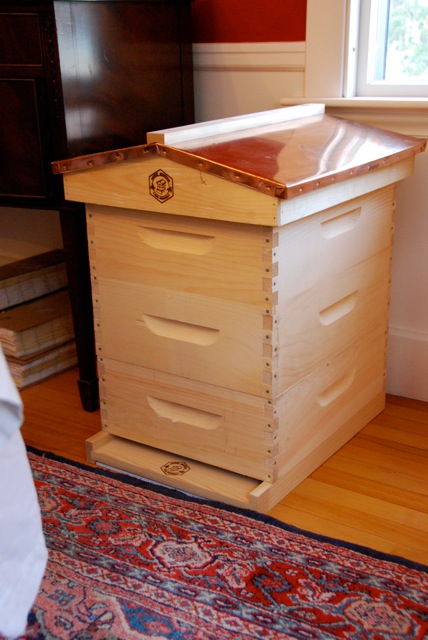Last weekend, I had my second “Bee School” class with Rick Cooper up at BEES-N-ME in Bowdoinham, Maine. Afterward, realizing all the stuff that I will need to put together for my first season with bees, I was feeling pressed for time and anxious to get to work. Fortunately, he had all the parts I needed to start building my supers and I filled up the back of the car with fresh-smelling pine boards.

I made the decision that I will go with all “mediums” to start out. This will mean that instead of two “deeps” (9-1/8″ tall) for brood chambers I will use three “mediums” (6-1/4″ tall). Rick explained that it was the amount of space the bees needed (about 20″) and not the specific configuration. On top of that, I reasoned that bees had been doing their thing for about 27 million years now and they probably didn’t care what we had arranged them (since around the 1860’s) traditionally in boxes. It also makes a whole lot of sense in terms of only having one size of equipment to deal with. The heft of the “Deeps” can also be an issue – as when they are full they can weigh close to 100 lbs. Not a fun size to lift repeatedly.

So I got my materials all laid out to build and started to bang away. The hive bodies (woodenware in beekeeper parlance) that I put together come from a local producer called Humble Abodes in Windsor, ME. Viola, a beehive super put together!

After that, I put together a couple more and stacked it up with the other stuff I had purchased from Rick. The bottom boards is a Brushy Mountain 10-Frame IPM Bottom Board (that means it has a screen for the bottom so the mites will fall off the bees and not be able to climb back up). The top is a bit of an extravagance – an “English Copper Top“- that is just a wonderful design. I could not resist. I am looking forward to watching the material develop a nice patina over time.

Next thing to start building will be the frames for the interior of the hive….
